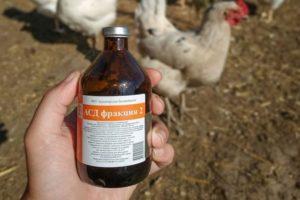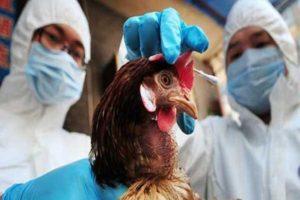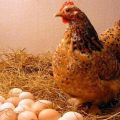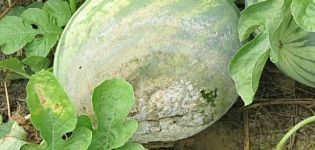The reasons for the appearance of blood in the yolk and white of a chicken egg, the solution to the problem and is it possible to eat
Breeding chickens on a home farm for obtaining eggs and meat is the oldest branch of agriculture. It is difficult to imagine a village courtyard without multi-colored layers wandering around the yard and a frying pan with hot scrambled eggs from the freshest eggs. Often, the hostess discovers blood clots in a chicken egg. The desire to eat such a product does not arise. The poultry farmer needs to understand the reason for the bird's demolition of a "bloody" marriage and eliminate it.
Why is there blood in chicken eggs?
An egg in a hen's body ripens 24-28 hours. First, the yolk is formed, then the formed protein surrounds it, and the shell is formed last. At any of these stages, a blood clot can form. The reason for this phenomenon may be:
- abdominal bruises (the chicken unsuccessfully flew off the roost and hit with the stomach, which caused a microtrauma with the release of blood in the oviduct);
- an excess of roosters in the herd that injure chickens;
- improper diet with an imbalanced trace element balance;
- inflammation of the oviduct and ovaries;
- the presence of internal parasites;
- too large eggs in young layers.
Depending on the location of the blood clots, you can determine the exact cause of their appearance.

In protein
The most likely cause of blood clots in the protein is an improper diet and worms in the laying hen.
Lack of mineral nutrition (shell, chalk, crushed eggshell), lack of greens in the diet, leads to incorrect formation of eggs. The chicken not only starts to "pour" them (to lay them without shells), but red dots and balls may appear in the squirrel.
Parasites in the chicken's body injure its internal organs, which causes microbleeding.
Some of the blood gets into the egg as it forms. With a strong infection of the bird, even the helminths themselves can get into the egg white.

On the shell
The blood on the shell appears at the moment the chicken lays an egg. An egg that is too large injures the oviduct or cloaca, leaving traces of blood on the shell. Often this occurs in young egg breeds, which immediately begin to lay large eggs.
Sometimes the egg gets stuck in the oviduct, the young hen cannot lay it. Quick help for the bird is to inject a small amount of sunflower oil from a syringe into the cloaca. The grease makes the shell slippery and helps the egg slip out.

In the yolk
Blood clots or subtle spots appear during the early stages of yolk formation. This is often associated with an excess of protein supplements (meat, fish, meat and bone meal, meal) in the diet.
Excess protein in chicken feed disrupts mineral metabolism, reduces the absorption of calcium and phosphorus.
Lack of vitamins D, E, A leads to inadequate functioning of the ovaries, the integrity of the follicle membrane is disrupted. It can also cause blood to appear in the yolk.
Due to diseases of the oviduct and ovaries (inflammation, the presence of the smallest pathogenic microorganisms), blood enters the yolk at an early stage of egg formation, and then it mixes with the protein. Such an egg has a doughy reddish-yellow substance inside.

Ways to solve the problem
Having determined the reason for the presence of blood in the yolk or protein, it should be eliminated:
- bring the ration of the livestock in line with the norm;
- start drinking vitamins and provide hens with mineral feeding;
- set perches at a safe height and remove excess roosters from the flock;
- treat the bird from worms.
Diseases of the oviduct (salpingitis, yolk peritonitis) are difficult to treat, especially if they are in advanced form. Such a bird is discarded. Valuable breeding hens are placed in a separate box and treated by douching the oviduct with antiseptic preparations.

Helpful advice and prevention
In order to prevent the appearance of "blood" eggs in domestic layers, you must follow the rules for keeping and feeding the bird:
- Eliminate injury to the bird. Perches should be placed at a height of 60-90 cm from the floor. If they need to be installed higher, the rungs are nailed in the form of a "slide" or "ladder" so that the chicken can jump from one perch to another, going down. The distance between the bars should be no more than 50 cm. The number of roosters in egg breeds should not exceed 1 individual per 10 chickens. In meat varieties, 2 roosters are allowed per dozen layers.
- Regularly rid chickens of worms. Routine deworming is carried out twice a year - in spring and autumn. If the layers are free-range, the parasites are poisoned more often - once a quarter. The risk of infection is present in chickens, which are fed with fresh grass collected from damp meadows.
- Provide livestock with a balanced feeding. The total feed rate per hen is 150 grams. Overfeeding is just as harmful to the bird as underfeeding. It is optimal to feed the hens with a complete feed, which contains all the elements necessary for the bird in a balanced form.
At home, chickens are fed with grain mixture, with additives. An approximate daily diet of a laying hen looks like this:
- crushed grain mixture (corn, wheat, barley) 60 grams;
- wheat bran 20 grams;
- sunflower cake 10 grams;
- fish meal 5 grams;
- feed yeast 3 grams;
- fresh herbs (herbal flour), vegetables 40-50 grams;
- table salt 1.5 grams.

Premix (Zdravur Layer, Ryabushka) is added to the grain mixture for layers for enrichment with microelements. Chalk, shell rock and shells are placed in a separate trough so that the bird can peck at them freely at any time.
To protect chickens from inflammation of the oviduct, the hen house, nests and walking areas are kept clean.

Is it okay to eat "bloody" eggs?
If only the shell is stained with blood, such a product can be safely eaten.
It is enough to wash the shell with soap.
Eggs with small blood spots and clots can be eaten after heat treatment - well-fried or hard-boiled. Blood particles are removed from the mass.









